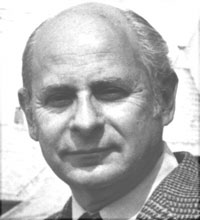George Washington: Our First President’s First Term
By Sam Blumenfeld
Printed in Practical Homeschooling #85, 2008.
 Setting traditions for those who followed - George Washington: Our First President’s First Term
Setting traditions for those who followed - George Washington: Our First President’s First Term

| 
|
 The government of the United States under the new Constitution got
underway in the first week of April 1789 when the new Congress achieved
its first quorum. Their initial duty was to pass the Bill of Rights, as
promised.
The government of the United States under the new Constitution got
underway in the first week of April 1789 when the new Congress achieved
its first quorum. Their initial duty was to pass the Bill of Rights, as
promised.
Earlier that year, on January 7, electors were chosen for the first
Presidential election in United States history. The electors, chosen by
the eligible voters in the various states, were free to cast their
ballots for whomever they wished. On February 4, they cast their ballots
as follows: 69 for Washington and 34 for John Adams, who therefore
became Vice President. This method of selecting a Vice President was
changed by the 12th Amendment in 1804.
On April 6, the ballots were counted in the Senate, and George
Washington was informed that he had been elected the First President of
the United States. The inauguration took place on April 30 in the Senate
Chamber of Federal Hall, New York City, the temporary capital of the
nation.
Washington immediately got to work organizing his administration. He
demonstrated that the new government under the new Constitution would be
what the citizens hoped it would be: a prudent and benevolent instrument
of governmental power in keeping with the precepts of the Declaration of
Independence and strictly limited in its powers. Every step had to be
taken in strict conformity to the guidelines set out in the
Constitution.
In September, Washington appointed Alexander Hamilton as Secretary of
the Treasury, General Henry Knox as Secretary of War, Edmund Randolph
as Attorney General and Thomas Jefferson as Secretary of State.
On September 29, the United States Army was created, consisting of the
forces already on hand during the final months of the Confederation. In
all, it consisted of only 1,000 men.
On November 26, President Washington proclaimed the nation’s first
Thanksgiving Day, in humble recognition of the great blessings that God
had bestowed on the new nation.
The year 1790 saw the first Census of the United States, as called for
by the Constitution. There were 4,000,000 inhabitants in all thirteen
states. Negro slaves accounted for 19.3 percent of the total population.
Many of the Founding Fathers hoped that slavery would be abolished, but
the economics of the South made that politically impossible. A West
Jersey Quaker wrote: “This trade of importing slaves is dark gloominess
hanging over the land; the consequences will be grievous to posterity.”
Patrick Henry stated in 1773, “A serious view of this subject gives a
gloomy prospect to future times.” And Jefferson wrote: “I tremble for my
country when I reflect that God is just, that His justice cannot sleep
forever.”
Madison held that where slavery exists “the republican theory becomes
fallacious. Slavery is the greatest evil under which the nation labors—a
portentous evil—an evil, moral, political, and economical—a blot on our
free country.”
It had been Washington’s hope that Virginia should remove slavery by a
public act; and as the prospects of a general emancipation grew more and
more dim, in utter hopelessness of the action of the State, he did all
that he could by bequeathing freedom to his own slaves.
In August 1790, the Capital was moved from New York to Philadelphia. In
June Hamilton had convinced Congress that the Federal Government should
assume the states’ debts. He won the support of the Southern States by
promising to move the nation’s capital to the South. This demonstrated
how compromise and promises would become major tools in crafting and
enacting legislation.
In 1791, two major philosophies of government began to emerge, polarized
around Hamilton and Jefferson, which set the stage for the creation of
political parties. The Hamilton faction, known as the Federalists,
advocated a strong central government and the development of industry.
Jefferson’s followers, the Democratic-Republican faction, favored a
weaker central government and stronger local control.
The Hamilton-Jefferson debates became the fodder of rival newspapers,
which became either pro-Federalist or pro-Democratic-Republican. Thus,
the two-party system got a very early start in our political history. Of
course, President Washington remained above the fray, maintaining the
utmost cordiality among his cabinet members. He was more of a referee
than a partisan.
On April 2, 1792, Congress passed the Coinage Act, authorizing the
establishment of a mint and prescribing a decimal system of coinage. The
U.S. dollar was to contain 24.75 grains of gold or 371.25 grains of
silver, in a fixed legal-tender ratio of 15 to 1.
On August 21, 1792, the Federal government levied an excise tax on
whiskey and on stills, which provoked strong protest in Western
Pennsylvania. Whiskey was the chief transportable and barterable Western
product. The Whiskey Rebellion was the most serious insurrection to face
the newly established Federal government. In 1794, President Washington
was finally forced to call up the militia army to end it. The result of
the insurrection was simply to strengthen the political power of
Hamilton and the Federalists.
Education expert Sam Blumenfeld’s Alpha-Phonics reading program is
available on www.samblumenfeld.net. His latest book, The
Marlowe-Shakespeare Connection, is about the Shakespeare authorship
mystery.